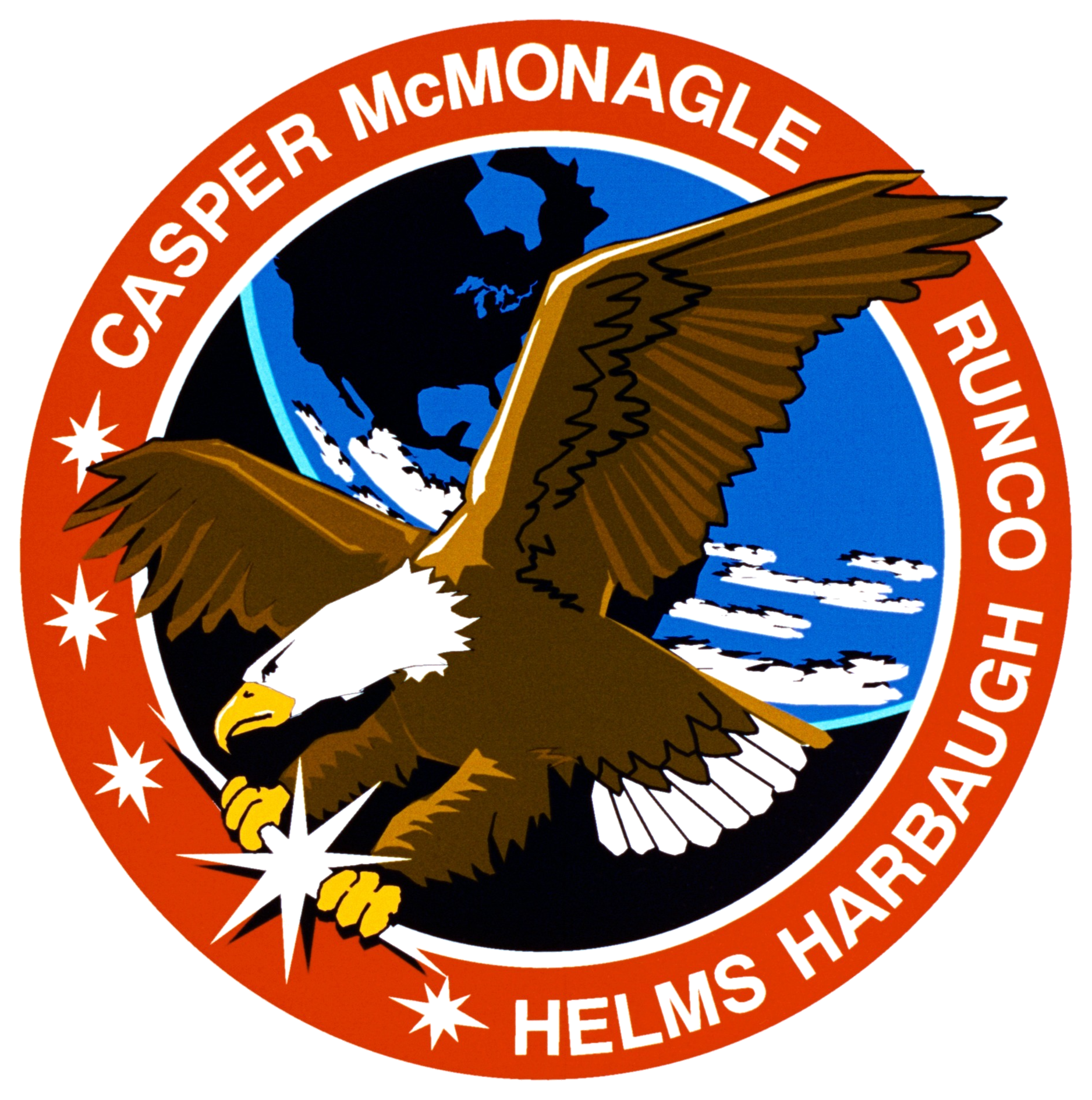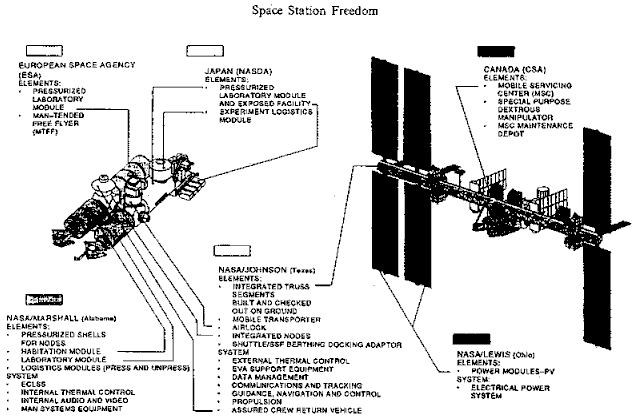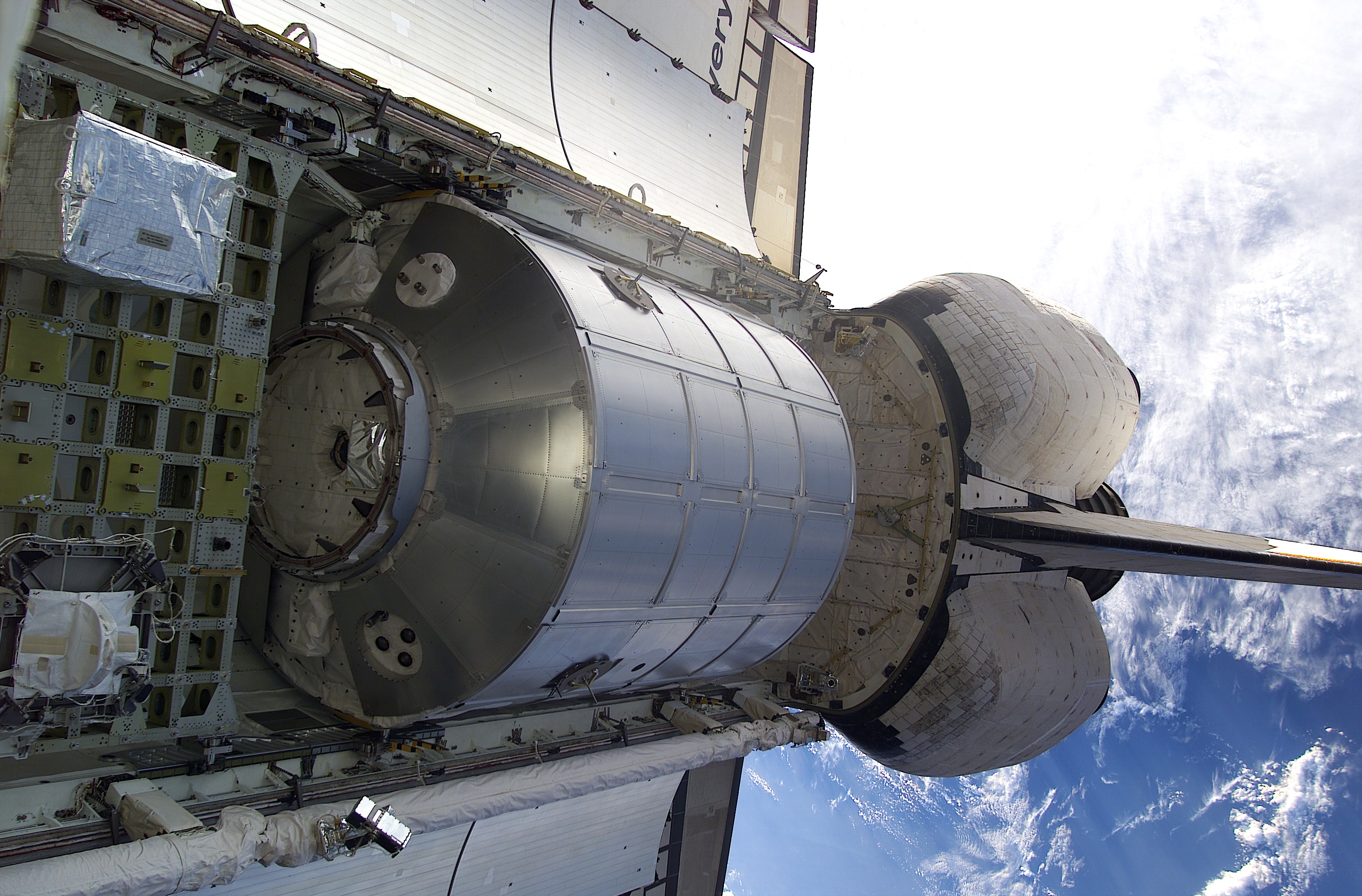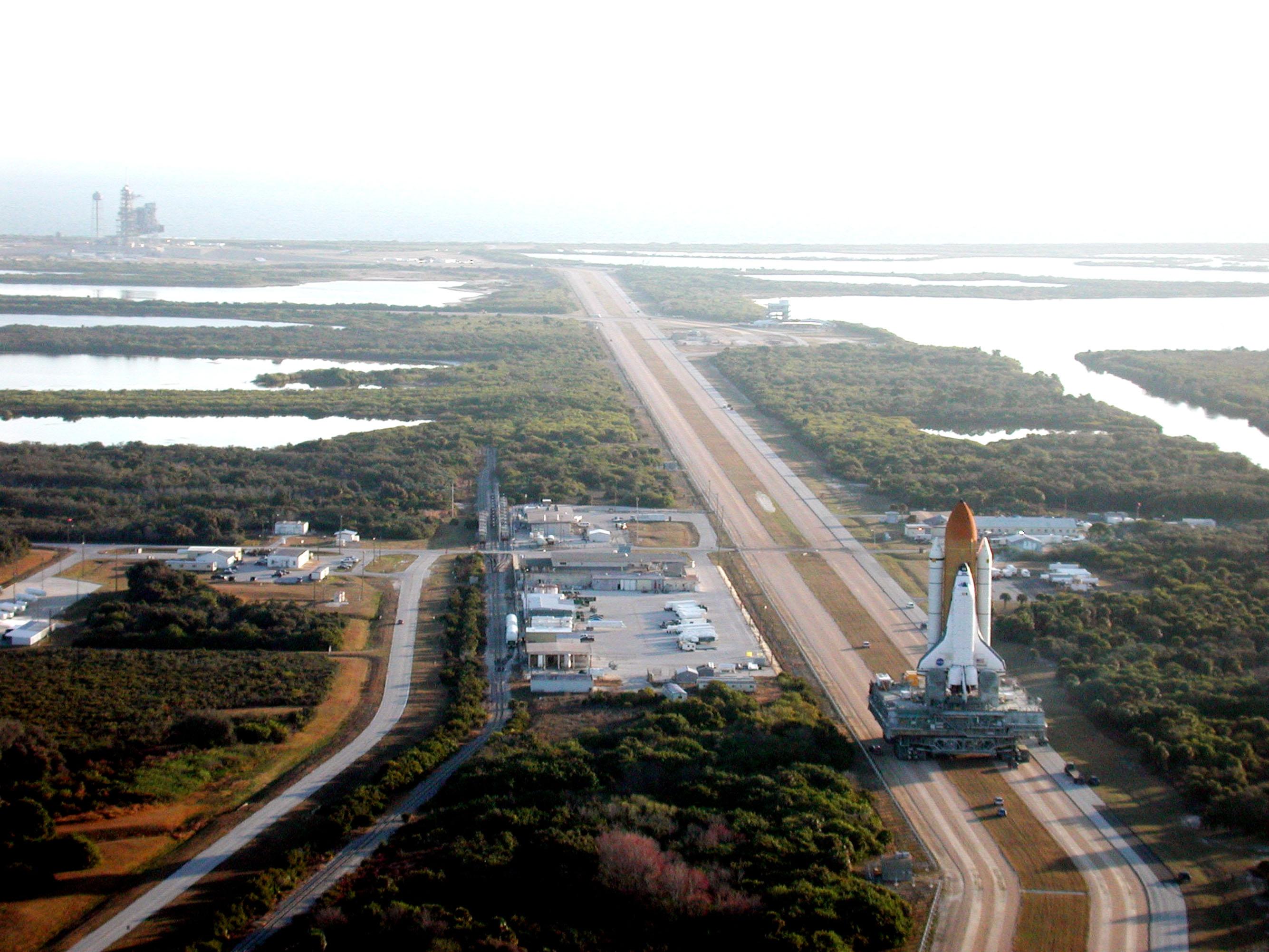|
STS-102
STS-102 was a Space Shuttle mission to the International Space Station (ISS) flown by Space Shuttle '' Discovery'' and launched from Kennedy Space Center, Florida. STS-102 flew in March 2001; its primary objectives were resupplying the ISS and rotating the Expedition 1 and Expedition 2 crews. At eight hours 56 minutes, the first EVA performed on the mission remains the longest spacewalk ever undertaken. Crew Spacewalks * '' Voss and Helms '' – EVA 1 *EVA 1 Start: 11 March 2001 – 05:12 UTC *EVA 1 End: 11 March 2001 – 14:08 UTC *Duration: 8 hours, 56 minutes * '' Thomas and Richards '' – EVA 2 *EVA 2 Start:13 March 2001 – 05:23 UTC *EVA 2 End: 13 March 2001 – 11:44 UTC *Duration: 6 hours, 21 minutes Mission highlights Space Station Assembly Flight ISS-5A.1 was the first use of the Multi Purpose Logistics Module (Leonardo) to bring supplies to the station. The steel modules were equipped with up to 16 International Standard Payload Racks for installation in the US ... [...More Info...] [...Related Items...] OR: [Wikipedia] [Google] [Baidu] |
Expedition 1
Expedition 1 was the first long-duration stay on the International Space Station (ISS). The three-person crew stayed aboard the station for 136 days, from November 2000 to March 2001. It was the beginning of an uninterrupted human presence on the station which continues as of December . Expedition 2, which also had three crew members, immediately followed Expedition 1. The official start of the expedition occurred when the crew docked to the station on 2 November 2000, aboard the Russian spacecraft Soyuz TM-31, which had launched on 31 October 2000 at the Baikonur Cosmodrome in Kazakhstan. During their mission, the Expedition 1 crew activated various systems on board the station, unpacked equipment that had been delivered, and hosted three visiting Space Shuttle crews and two uncrewed Russian Progress resupply vehicles. The crew was very busy throughout the mission, which was declared a success. The three visiting Space Shuttles brought equipment, supplies, and key components of ... [...More Info...] [...Related Items...] OR: [Wikipedia] [Google] [Baidu] |
Susan Helms
Susan Jane Helms (born February 26, 1958) is a retired United States Air Force lieutenant general and NASA astronaut. She was the commander, 14th Air Force (Air Forces Strategic); and commander, Joint Functional Component Command for Space at Vandenberg Air Force Base in California. Helms was a crew member on five Space Shuttle missions and was a resident of the International Space Station (ISS) for over five months in 2001. While participating in ISS Expedition 2, she and Jim Voss conducted an 8-hour and 56 minute spacewalk, the world record for the longest spacewalk. Helms officially retired from the United States Air Force in 2014. In 2020, she was elected a member of the National Academy of Engineering for accomplishments in civil and military space programs. Personal life Helms was born in Charlotte, North Carolina, but considers Portland, Oregon, to be her hometown. She enjoys piano and other musical activities, jogging, traveling, reading, computers, and cooking. She ... [...More Info...] [...Related Items...] OR: [Wikipedia] [Google] [Baidu] |
Expedition 2
Expedition 2 (also called ISS EO-2) was the second long-duration spaceflight aboard the International Space Station, immediately following Expedition 1. Its three-person crew stayed aboard the station from March to August 2001. In addition to station maintenance, the crew assisted in several station assembly missions, welcomed the first space tourist Dennis Tito, and conducted some scientific experiments. The crew consisted of one Russian, Commander Yury Usachev, and two American flight engineers Susan Helms and James Voss. The three had been to the station briefly in the previous year, during the 10-day mission STS-101 in May 2000. The Expedition 2 crew was brought to the station aboard Space Shuttle ''Discovery'' during mission STS-102. The Expedition's increment began when ''Discovery'' docked on 10 March 2001, bringing Expedition 1 to an end. In addition to the Space Shuttle flights which brought the crew to and from the station, there were two visiting Space Shuttle mis ... [...More Info...] [...Related Items...] OR: [Wikipedia] [Google] [Baidu] |
PMA-2
The Pressurized Mating Adapter (PMA) is a class of spacecraft adapters that convert the Common Berthing Mechanism (CBM) used on the US Orbital Segment to APAS-95 docking ports. There are three PMAs located on the International Space Station (ISS); the first two were launched with the ''Unity'' connecting module in 1998 aboard STS-88, and the third was launched in 2000 aboard STS-92. All three of the PMAs are now used to permanently connect parts of the ISS, so they are no longer available as docking ports for visiting spacecraft. Design/History Its origins lie in designs for the Pressurized Docking Mast, consisting of an off-axis frustoconical docking tunnel contained within a framework and a retractable coupling mechanism, later part of the Pressurized Berthing Adapter assembly that appeared in designs for Space Station Freedom 1987, and the reduced design referred to as 'Fred' 1991. After 1992-93 and the Russian integration into the International Space Station Alpha proj ... [...More Info...] [...Related Items...] OR: [Wikipedia] [Google] [Baidu] |
Multi Purpose Logistics Module
A Multi-Purpose Logistics Module (MPLM) is a large pressurized container that was used on Space Shuttle missions to transfer cargo to and from the International Space Station (ISS). Two MPLMs made a dozen trips in the Shuttle cargo bay and initially berthed to the ''Unity'' module and later the ''Harmony'' module on the ISS. From there, supplies were offloaded, and finished experiments and waste were reloaded. The MPLM was then reberthed in the Shuttle for return to Earth. Three modules were built by the Italian Space Agency (ASI): ''Leonardo'', ''Raffaello'', and ''Donatello''. The ''Leonardo'' module was modified in 2010 to turn it into the Permanent Multipurpose Module (PMM) and was permanently attached to the ISS during the STS-133 mission in March 2011. In July 2011, the ''Raffaello'' module was the primary payload on the final Space Shuttle mission. It returned with the Shuttle and was stored at the Kennedy Space Center. The ''Donatello'' module never launched. MP ... [...More Info...] [...Related Items...] OR: [Wikipedia] [Google] [Baidu] |
Space Shuttle Discovery
Space Shuttle ''Discovery'' (Orbiter Vehicle Designation: OV-103) is one of the orbiters from NASA's Space Shuttle program and the third of five fully operational orbiters to be built. Its first mission, STS-41-D, flew from August 30 to September 5, 1984. Over 27 years of service it launched and landed 39 times, aggregating more spaceflights than any other spacecraft to date. The Space Shuttle launch vehicle has three main components: the Space Shuttle orbiter, a single-use central fuel tank, and two reusable solid rocket boosters. Nearly 25,000 heat-resistant tiles cover the orbiter to protect it from high temperatures on re-entry. ''Discovery'' became the third operational orbiter to enter service, preceded by '' Columbia'' and '' Challenger''. It embarked on its final mission, STS-133, on February 24, 2011, and touched down for the last time at Kennedy Space Center on March 9, having spent a cumulative total of nearly a full year in space. ''Discovery'' performed both ... [...More Info...] [...Related Items...] OR: [Wikipedia] [Google] [Baidu] |
STS-100
STS-100 was a Space Shuttle mission to the International Space Station (ISS) flown by Space Shuttle '' Endeavour''. STS-100 launch on 19 April 2001, and installed the ISS Canadarm2 robotic arm. Crew Mission highlights The highest priority objectives of the flight were the installation, activation and checkout of the Canadarm2 robotic arm on the station. The arm - manufactured by MDA Space Missions under contract of the Canadian Space Agency and NASA, went into operation on 28 April 2001. It was critical to the capability to continue assembly of the International Space Station. The arm was also necessary to attach a new airlock to the station on the subsequent shuttle flight, mission STS-104. The final component of the Canadarm is the Mobile Base System (MBS), which was installed on board the station during the STS-111 flight. Other major objectives for ''Endeavours mission were to berth the ''Raffaello'' logistics module to the station, activate it, transfer cargo betwe ... [...More Info...] [...Related Items...] OR: [Wikipedia] [Google] [Baidu] |
STS-98
STS-98 was a 2001 Space Shuttle mission to the International Space Station (ISS) flown by Space Shuttle '' Atlantis''. It was the first human spaceflight launch of the 21st century. STS-98 delivered to the station the ''Destiny'' Laboratory Module. All mission objectives were completed and the shuttle reentered and landed safely at Edwards Air Force Base on 20 February 2001, after twelve days in space, six of which were spent docked to the ISS. Crew Crew notes Mark C. Lee was scheduled to fly as Mission Specialist 1 on his fifth trip to space, but due to undisclosed reasons, he was removed from this flight. His replacement was Robert Curbeam. Launch attempts Mission highlights The crew continued the task of building and enhancing the International Space Station by delivering the U.S. ''Destiny'' Laboratory Module. It was the first NASA lab to be permanently used since the days of Skylab nearly three decades earlier. It was manufactured by Boeing at the Michoud Assembly ... [...More Info...] [...Related Items...] OR: [Wikipedia] [Google] [Baidu] |
Destiny (ISS Module)
The ''Destiny'' module, also known as the U.S. Lab, is the primary operating facility for United States, U.S. research payloads aboard the International Space Station (ISS). It was berthed to the ''Unity (ISS module), Unity'' module and activated over a period of five days in February, 2001. ''Destiny'' is NASA's first permanent operating orbital research station since Skylab was vacated in February 1974. The Boeing Company began construction of the research laboratory in 1995 at the Michoud Assembly Facility and then the Marshall Space Flight Center in Huntsville, Alabama, Huntsville, Alabama. ''Destiny'' was shipped to the Kennedy Space Center in Florida in 1998, and was turned over to NASA for pre-launch preparations in August 2000. It launched on February 7, 2001 aboard the on STS-98. Astronauts work inside the pressurized facility to conduct research in numerous scientific fields. Scientists throughout the world would use the results to enhance their studies in medicine, ... [...More Info...] [...Related Items...] OR: [Wikipedia] [Google] [Baidu] |
Space Transportation System
The Space Transportation System (STS), also known internally to NASA as the Integrated Program Plan (IPP), was a proposed system of reusable crewed space vehicles envisioned in 1969 to support extended operations beyond the Apollo program. (NASA appropriated the name for its Space Shuttle Program, the only component of the proposal to survive Congressional funding approval). The purpose of the system was two-fold: to reduce the cost of spaceflight by replacing the current method of launching capsules on expendable rockets with reusable spacecraft; and to support ambitious follow-on programs including permanent orbiting space stations around Earth and the Moon, and a human landing mission to Mars. In February 1969, President Richard Nixon appointed a Space Task Group headed by Vice President Spiro Agnew to recommend human space projects beyond Apollo. The group responded in September with the outline of the STS, and three different program levels of effort culminating with a ... [...More Info...] [...Related Items...] OR: [Wikipedia] [Google] [Baidu] |
International Space Station
The International Space Station (ISS) is the largest modular space station currently in low Earth orbit. It is a multinational collaborative project involving five participating space agencies: NASA (United States), Roscosmos (Russia), JAXA (Japan), ESA (Europe), and CSA (Canada). The ownership and use of the space station is established by intergovernmental treaties and agreements. The station serves as a microgravity and space environment research laboratory in which scientific research is conducted in astrobiology, astronomy, meteorology, physics, and other fields. The ISS is suited for testing the spacecraft systems and equipment required for possible future long-duration missions to the Moon and Mars. The ISS programme evolved from the Space Station ''Freedom'', a 1984 American proposal to construct a permanently crewed Earth-orbiting station, and the contemporaneous Soviet/Russian '' Mir-2'' proposal from 1976 with similar aims. The ISS is the ninth space station to ... [...More Info...] [...Related Items...] OR: [Wikipedia] [Google] [Baidu] |
International Standard Payload Rack
The International Standard Payload Rack (ISPR) is a steel framework container that is designed and been adopted by the International Space Station (ISS) program to support efficient integration and interchangeability of space payload hardware, such as machines and experiments. A typical rack contains 37 ISPR slots for science payloads, which are interchangeable to accommodate different components or payloads. Capabilities Each ISPR provides 1.571 m3 (55.5 ft3) of internal volume being about 2 m (79.3 in) high, 1.05 m (41.3 in) wide, and 85.9 cm (33.8 in) deep. The rack weighs 104 kg (230 lb) and can accommodate an additional 700 kg (1540 lb) of payload equipment. The rack has internal mounting provisions to allow attachment of secondary structure. The ISPRs will be outfitted with a thin center post to accommodate sub-rack-sized payloads, such as the 483 mm ( 19-inch rack) Spacelab Standard Interface Rack (SIR) Dr ... [...More Info...] [...Related Items...] OR: [Wikipedia] [Google] [Baidu] |







.jpg)